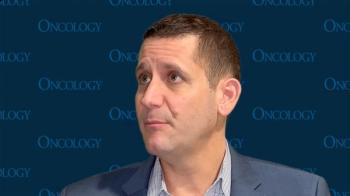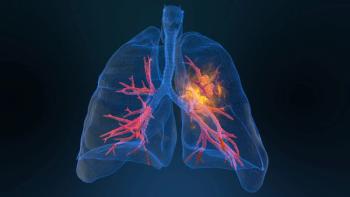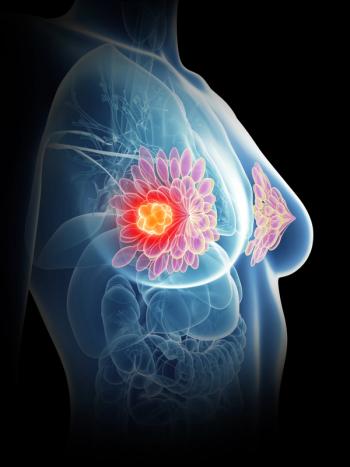
Mindfulness Meditation, Survivorship Education Reduce Depression in Young Breast Cancer Survivors
Behavioral interventions were found to help young breast cancer survivors in reducing their depressive symptoms.
Behavioral interventions, including mindfulness meditation and survivorship education classes, reduced depressive symptoms in younger women treated for breast cancer, according to study findings presented at the 2020 San Antonio Breast Cancer Symposium.
Approximately 20% of breast cancers occur in women aged 50 or younger, a group of patients who are at an increased risk for negative effects from their diagnosis and its treatment, lead author Patricia A. Ganz, MD, said during a virtual presentation of the study.
“Younger breast cancer survivors represent a vulnerable population, with well-documented side effects from breast cancer treatments and notable increases in depressive symptoms,” explained Ganz, associate director for population science research at the UCLA Jonsson Comprehensive Cancer Center and distinguished professor of medicine at the David Geffen School of Medicine at UCLA as well as health policy and management at the UCLA Fielding School of Public Health. “These lasting effects of breast cancer treatments can have a negative impact on quality of life in the survivorship period.”
In the multi-institutional, randomized phase 3 Pathway to Wellness (PTW) trial (NCT03025139), the researchers evaluated the efficacy of mindfulness meditation and survivorship education classes — both aimed to target depressive symptoms in younger breast cancer survivors — compared with a concurrent waitlist control group.
Both interventions consisted of 6-week programs conducted for 2 hours each week. Participants were provided with a series of educational seminars, with discussions of life after breast cancer.
The intervention programs had a standard curriculum that was manually documented and recorded throughout the study.
Mindfulness Awareness Practices (MAPS) sessions included:
- What is mindfulness;
- Listening, embodiment and obstacles;
- Working with pain;
- Working with difficult emotions and cultivating positive emotions;
- Working with thoughts and mindful interactions; and
- A wrap-up session.
Survivorship education included:
- Breast cancer 101: important issues for younger survivors;
- Quality of life in breast cancer survivors;
- Energy balance, nutrition, and physical activity;
- Cancer in the family: cancer genetics and testing;
- Relationships and work-life balance; and
- Body image, menopause, and sexual health.
Patients were screened by phone and included in the study if they were 50 years or younger with a diagnosis of stage 0-3 breast cancer, between 6 months and 5 years after their primary treatment, had no metastatic disease, were not already practicing meditation, had a minimum level of depressive symptoms on PHQ-8, and were willing to be randomized and able to participate in the 6-week program.
“We cast a wide net for participant recruitment, using hospital tumor registry listings of age-eligible participants, direct engagement of clinicians, flyers, and media announcements during three years of recruitment,” Ganz noted.
The primary outcome of the study was depressive symptoms at post-intervention (CES-D score of 16 or greater), while secondary outcomes included anxiety, fatigue, sleep disturbance, and hot flashes. The researchers also conducted an exploratory analysis to determine changes in inflammatory markers. Assessments were conducted before the interventions started, post-intervention and at 3- and 6-month post-intervention follow-ups.
Of the 247 patients in the intent-to-treat population, 85 were analyzed under the MAPS intervention, 81 with survivorship education, and 81 who were in the waitlist control group.
Average age of participants was 45.4 years (SD, 6.4). The majority of patients were White (82%), married (75%), and employed full time (68%). On average, patients were 2.6 years out from their breast cancer diagnosis (SD, 1.1), with the majority having undergone a mastectomy (56%), or received chemotherapy (57%) or radiation (65%). Moreover, 66% reported to be on endocrine therapy during the study period.
At baseline, all 3 groups reported mean CES-D scores above 16, with over 50% of participants scoring in the clinically depressed range before the intervention. However, at post-intervention, the researchers saw a significant decline in depression for both the MAPS and survivorship education groups, with only 30% of women scoring in the clinically depressed range. These scores were sustained at 3 months in both cohorts and at 6 months in the MAPS cohort.
Anxiety, sleep disturbance, and hot flashes significantly improved in both intervention groups; however, fatigue severity only improved significantly in the MAPS cohort. Of note, improvement in these areas was not sustainable in either group.
“The Pathways to Wellness participants have high levels of depression, anxiety, fatigue, sleep disturbance, and other symptoms an average of 2.6 years after diagnosis,” Ganz concluded. “Interventions significantly reduced depression, with additional reductions in other symptoms only in the MAPS group. … Further dissemination and evaluation of these interventions is warranted to address the unmet psychosocial needs of young breast cancer survivors.”
Reference
Ganz PA, Bower JE, Partridge AH, et al. Targeting Depressive Symptoms in Younger Breast Cancer Survivors: A RCT of Mindfulness Meditation and Survivor Education. Presented at: 2020 San Antonio Breast Cancer Symposium; December 11, 2020; Virtual. Abstract GS2-10.
Newsletter
Stay up to date on recent advances in the multidisciplinary approach to cancer.


















































































